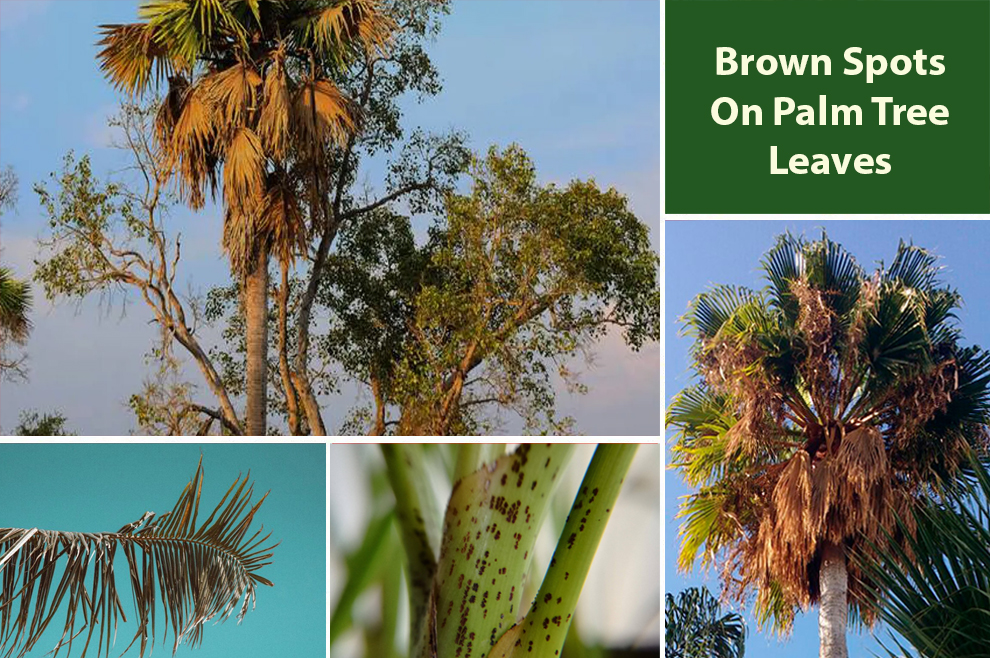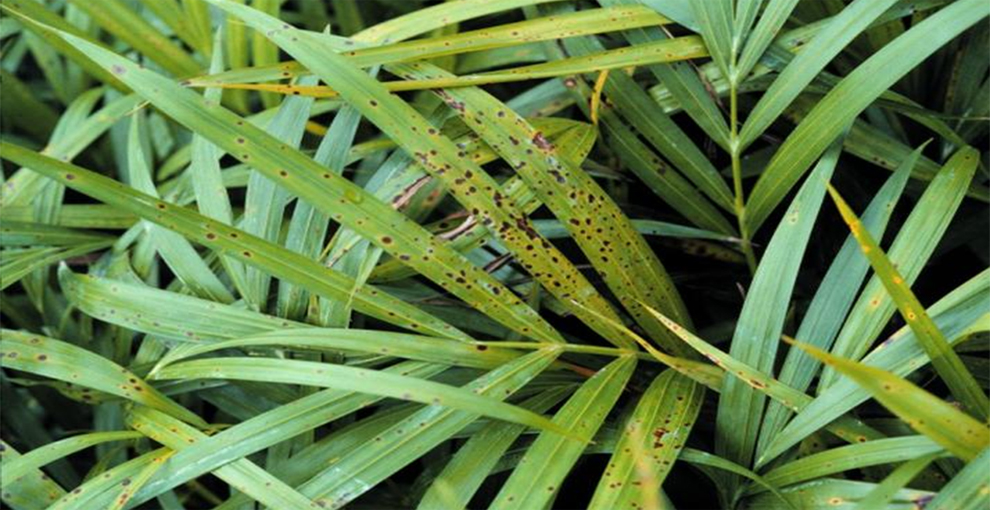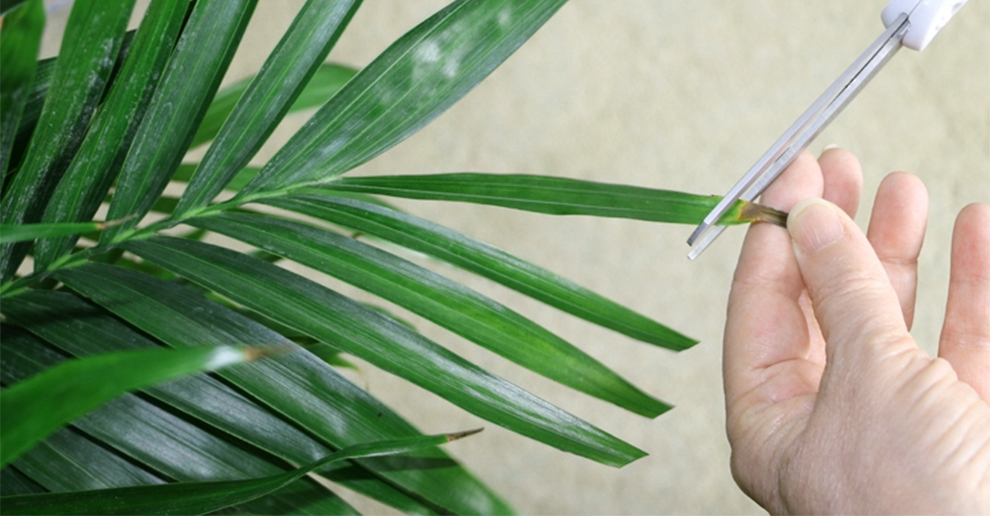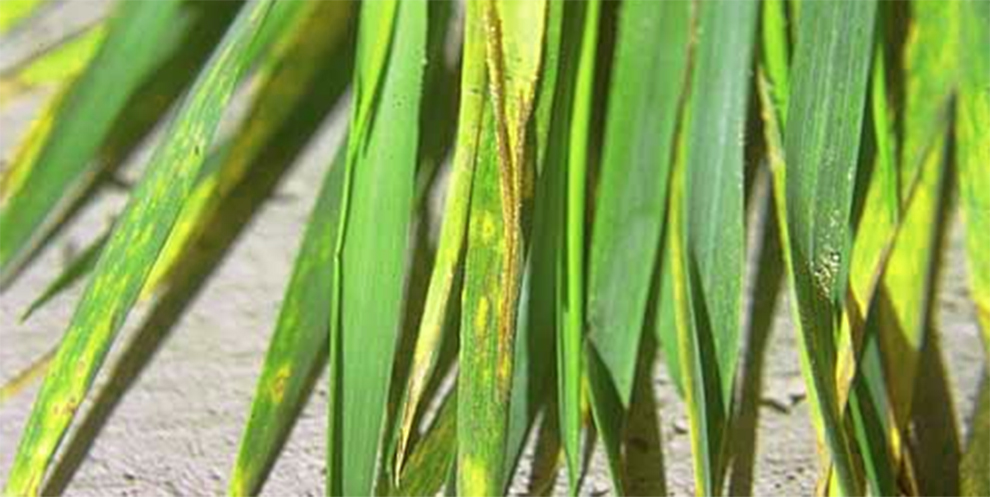Brown Spots On Palm Leaves: Causes, Prevention & Treatments
Brown spots on palm tree fronds can occur due to pest attacks, nutritional problems, no sunlight, fungal or bacterial infection, or inadequate watering.

Among the many signs of palm tree damage and improper care is its stunted growth and discolored brown foliage. Brown spots on palms care ommonly a sign of an underlying issue that needs your attention.
The most prevalent reason for the brown spots includes nutrient deficiencies, pest infestations, fungal infections, underwatering, or overwatering. Environmental stressors like lack of sunlight or extreme temperature may also lead to brown spots on palm tree leaves.
Thus, it is imperative to identify the cause of the brown spots and take apt measures to treat the underlying issue. Proper care and maintenance, like pest control, watering, and fertilizing, can help avoid the brown spots on the tree and help with healthy growth.
Almost the reasons for Majesty Palm brown spots, Areca palm brown spots, Kentia palm brown spots, Parlor palm brown spots are the same. So, the treatment option is also more or less similar.
What Causes Palm Tree Brown Spots?
The palm tree leaves may develop brown spots because of various factors. Understanding these reasons can help identify and treat the problem. Below we will discuss some main reasons for the brown spots in the palm tree leaves:
A. Bacterial or Fungal Infections
Bacterial and fungal infections are the number one reason for browning of palm leaves. The two prevalent examples include the false smut and Graphiola leaf spot.
False smut is a bacterial infection that affects palms and is prevalent in moist and warm environments.
The disease results in black or brown spots on the leaves, which spreads to the fruits and other parts of the plants. False smut usually spreads by wind, insects, rain, and contaminated pruning tools.
Graphiola leaf spots are a fungal infection that affects that palm trees, especially the ones in wet and humid conditions. The disease shows as black or tiny brown spots on the leaves that later grow bigger and causes the leaves to drop and turn yellow.
The fungus thrives on infected plant debris. It can spread through wind, rain, and pruning tools.
You can treat false smut and graphiola leaf spot with bactericides or fungicides, respectively, but prevention is imperative.
Prevention: Proper irrigation, good sanitation practices, and routine inspections can help avoid bacterial or fungal infestations from occurring in the first place.
B. Brown Spots on Palm Due to Nutritional Deficiency & Imbalance
The two main reasons for imbalance and nutritional deficiency are too much fluoride and copper in the soil or excessively salty soil.
Typically, the soil may have a high salt content when you irrigate it with salty water or overfertilize the palms. It may lead to nutrient imbalance and curtail the palm’s ability to absorb vital minerals like manganese, iron, and magnesium.
Consequently, you may see palm tree brown spots as an outcome of nutrient deficiencies. It may also lead to stunted growth or kill the plant in severe cases.
Similarly, excessive fluoride or copper in the soil may also result in nutritional imbalances in palm trees, causing brown spots on the leaves.
Copper toxicity occurs when copper sulfate is employed excessively as a pesticide or fungicide. It can lead to the yellowing of leaves or brown spots. Excessive copper or fluoride in the soil caused , stunted growth, tip burn, and sometimes even killed the plant.
Prevention: Monitor the soil’s nutrient levels and take apt measures to rectify these imbalances. You can consider making soil amendments, adjusting the fertilizer application, and working on irrigation management.
Sometimes, you may have to remove the palm tree and replace it with a specie more suitable for the available soil conditions.
C. Brown Spots on Palm Leaves Caused By Excessive Fertilizer Use
Even though palms need fertilizer for growing, too much of it can cause nutrient imbalance, resulting in brown spots and other symptoms.
Overfeeding leads to an excessive nutrient buildup in the soil, resulting in a nutrient imbalance that hampers the palm tree’s health.
For instance, excessive nitrogen can make the leaves turn yellow or brown, phosphorous toxicity results in brown spots and leaf burn, and potassium toxicity results in brown spots on the leaves and leaf scorching.
You must follow proper fertilization guidelines and not over-fertilize the palm trees. Thus, pick slow-release plant foods and apply the fertilizer at the recommended rates only.
Prevention: Do not fertilize during periods of stress or drought. If brown spots show because of excessive fertilizer use, flush the soil, remove extra nutrients, and rectify the nutrient balance.
Regular soil testing also helps assess the nutrient levels in the soil and guide fertilizer application rates.
It is crucial to strike a balance between providing the palm with vital nutrients and not over-fertilizing it, as that may lead to brown spots on sago palm leaves, Kentia leaves, and all other palm tree leaves.
D. Root Rot Leading to Brown Spots on Palm Fronds
Root rot is a fungal infection that may lead to brown spots on the palm tree leaves. The disease occurs when the palm tree roots become infected with fungi that thrive in moist conditions. Root rot may arise from soil compaction, poor drainage, and overwatering.
When the fungal infection spreads, it might cause the roots to decay and die, resulting in a lack of nutrient uptake by the palm tree. It may lead to brown spots on the leaves, wilting, and even the tree’s death.
Prevention: Preventing root rot involves drainage management and an apt watering schedule. You must not overwater the palm, especially if planted in poor drainage soil, and ensure the soil is not compacted. Further, avoid growing palms in low-lying areas susceptible to waterlogging.
However, if the root rot develops, it is vital to eliminate the affected roots and treat the remaining ones with fungicides.
In some extreme cases, you may have to uproot the palm tree completely and replant it in a different location with better drainage. Regular maintenance and inspection help avoid root rot and helps maintain the plant’s overall health.
E. Pests Causing Palm Plant Brown Spots
Some of the pests responsible for this problem include mealybugs, scale insects, and spider mites.
Spider mites are tiny pests that feed on the sap of the leaves, resulting in brown spots. These spots tend to coalesce and enlarge, eventually making the leaves turn yellow and drop prematurely. You can control spider mites with miticides or insecticidal soaps.
Scale insects are other pests that lead to brown spots on the palm tree leaves. They feed onto the sap and excrete a sticky substance called honeydew that attracts sooty mold and causes brown spots on the leaves. You can combat them with horticultural oils or insecticidal soaps.
Mealybugs are soft-bodied insects that feed on the sap. They also excrete honeydew that attracts sooty molds and causes brown spots on the leaves. You can control the mealybugs with insecticidal soaps, systemic insecticides, or horticultural oils.
Prevention: Pest infestations demand regular inspection and maintaining a healthy environment to deter them.
Do not over-feed the plant, remove infested or dead leaves, and provide apt irrigation. When an infestation occurs, take prompt action and control the pests to avoid further damage to the tree.
F. Overwatering
Overwatering is one of the top reasons for the brown spots on the palm tree leaves. When the soil around the palm tree roots is consistently wet, it may result in root rot, which may cause brown spots on the leaves.
Further, it makes it challenging for the plant to absorb the nutrients and water and may stress the tree, resulting in brown spots on the leaves. In addition, overwatering also causes symptoms like stunted growth, wilting, and yellowing leaves.
Prevention: To avoid overwatering, monitor the moisture levels around the roots. The watering frequency depends on various factors like soil type, type of palm tree, and container size.
Generally speaking, let the topsoil layer dry before watering again. Improving drainage can also help avoid overwatering. If the soil around the roots is persistently waterlogged, it is vital to amend the soil with organic matter.
Alternatively, you can also add drainage holes to the container. Routine inspections and maintenance can help avoid overwatering and improve the tree’s health.
G. Cold and Freeze Can Also Result In Brown Spots on Palm Fronds
Freeze and cold damage might also result in brown spots.When the trees are exposed to temperatures below the tolerance level, they can damage the leaves and other parts.
Some cold damage symptoms include yellowing, brown spots, and wilting. In some extreme cases, the entire leaf may turn black or brown and eventually die.
Prevention: To avoid freeze or cold damage, pick the palm tree species well-suited for the local climate and offer them adequate protection during cold weather. It involves using burlap wraps, frost blankets, or other protective covering to guard the palm trees against the cold.
If the freeze or cold damage has already occurred, you must assess the extent of the damage and take adequate measures. Pruning the damaged leaves and offering additional care like fertilizing and watering can also help the palm tree recover.
But in some cases, the tree cannot recover and will have to be removed and replaced with a more cold-hardy variety.
H. Aging and Browning of Palm Leaves
Aging may also lead to brown spots on the palm leaves. As the tree grows older, the leaves turn yellow naturally and start dying off, leaving behind brown spots. It is a natural part of the overall aging process and usually shows in the lower leaves of the palm.
To distinguish aging from other causes of brown spots, assess the plant for a pattern of brown spots that commences at the tree’s bottom and gradually progresses upwards.
The brown spots may also be accompanied by wilting and yellowing of the leaves. Even though aging is a natural phenomenon, you must offer the plant routine care and maintenance to boost overall health.
It will involve regular pruning to eliminate the dying or dead leaves, fertilizing to feed essential nutrients, and watering to maintain the moisture levels in the soil.
Brown Spots On Indoor Palm Leaves

Just like outdoor plants, you may find brown spots on palm tree leaves indoors. brown spots because of bacterial or fungal infections, environmental stressors like low light and dry air, overwatering, and nutritional deficiencies.
To assess the reason for brown spots on the indoor palm, you must carefully examine the plant’s watering habits, environment, and overall growth.
Proper maintenance and care, for instance, providing adequate humidity and light and adjusting the watering frequency, can help avoid and treat brown spots on indoor palm leaves.
Furthermore, treating underlying issues like infections or pests with apt fungicides or pesticides can also help better plant health. Pruning the affected leaves promotes new growth and improves the plant’s appeal.
Regular care and monitoring can help you grow a beautiful and healthy indoor palm tree sans any brown spots or other issues.
Should I Cut Off Brown Palm Leaves?

Generally speaking, you must chop off the brown palm leaves to keep the palm lush green and pretty. You can improve the plant’s aesthetic appearance by removing the brown leaves.
It also helps avoid further damage and curtail the spread. Further, chopping dying or dead leaves help promote new growth and boosts the tree’s ability to allocate resources toward healthy leaves.
While cutting the brown palm trees, you must employ clean and sharp pruning tools to prevent damaging the tree. Cut the leaves as close to the trunk as possible without injuring them, and dispose of the leaves such that it does not spread any diseases or pests.
But please note it is not necessary to remove all the leaves with brown spots. If the spots are just a few, the leaf might recover with change in care.
Palm Leaf Spot Treatment Options

The treatment options for palm tree brown spots depend on the underlying reason for the problems. Thus, identifying the cause is imperative to offer the correct treatment. Here are some general measures you can take:
- Fungal or bacterial infections: Apply a fungicide or a bactericide to the affected leaves and the surrounding soil. In severe cases, trim the affected leaves.
- Nutritional deficiencies: Alter the soil’s pH and apply supplements or fertilizers.
- Pests: Use an insecticide or a pesticide on the affected areas and the surrounding soil. In severe cases, pruning can help.
- Overwatering: Adjusting the watering habits and ensuring the soil is not too wet. Further, improving drainage and avoiding accumulation around the roots can help.
- Freeze and cold: Guard the tree against further exposure to cold temperatures by offering extra care and maintenance to allow the tree to recover.
